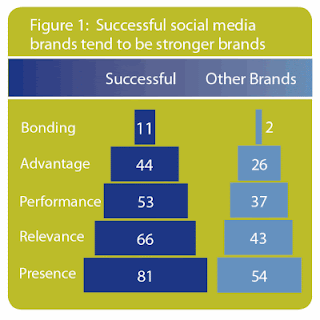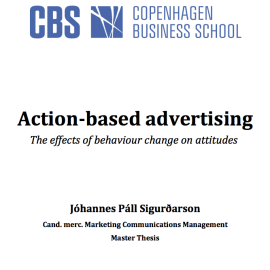Flipping AIDA: Why it’s Much More Effective to Start With Action
Opinion
In marketing communications the dominant view is that we grow brands by climbing up the AIDA ladder. That is you use your marketing communications dollars to create Awareness, then build Interest, then motivate Desire, before finally seeing Action. Amazingly the model was created in 1898 by E. St Elmo Lewis after studying how to sell life insurance. It has no scientific robustness, nor credibility. but it was simple to follow and perhaps had some perceived logic. Anyway the model, with some slight variations has stuck. It’s also how people still see marketing communications (it’s how most marketers and market research companies measure brand health)

However, if you’ve been working with Naked Communications over the last 18 months or so you’ll know that we have resorted to flipping the AIDA model on its head to communicate our view on how many strong brands are built today. That is strong brands are built through action. We believe changing behaviour is what marketing communications is about (why are you spending money otherwise), and the best way to change behaviour is through action. Drive Action first, and the rest will, by and large look after itself. The Naked Communications ADIA Model is below – the most important thing to note is that we start with action.

There are three key reasons we have done this, a psychological reason, a technology reason, and lastly a business reason.
The Psychological Reason
Human behaviour works like this, How you think controls how you feel that in turn controls how you act. However, Cognitive Behavioural Psychologists have now stopped arguing over what comes first emotions or thoughts (the two are inextricably linked yet we have more control over thoughts hence they make a more useful therapeutic tool) and jump straight to action. Or as Castonguay and Beutler, 2006 say in a meta study “effective treatment is characterised more by behaviour change than insight”. If we can focus on behaviours the rest will follow.To this end psychologists today don’t ask you to sit on the couch and have an insight, they get you practising the desired behaviour and reinforcing it when it happens. The same goes for marketing communications – we should stop trying to find a big emotional connection with advertising, and start to promote action.

The Technical Reason
We now live in a digital age. ALL media can now command action. There is no media that needs to be received passively. A TV ad can have a URL, a website can have a link, an outdoor ad can have a hyperlink, a magazine ad can have a QR code. Further, so much technology can help brands provide utility to people. Marketers can use their marketing dollars to promote action, not just passively receive a one way image.
It’s been asked that if we have technology to command action always then why don’t we? Well the short answer is that it’s extremely hard to create advertising ideas that people chose to interact with. It’s much easier to create ads that people must watch passively as they interrupt their favourite program. Creating ideas that people chose to (inter)act with is extremely difficult, and requires genuine human insight. In short, with so many ways to promote action with the consumer why would you just want to build an emotional connection?
The Business Reason
There is little argument that passive advertising has been an effective way of build a brand for many situations (i.e. you have a brand big enough to warrant the massive entry costs of production and media). However, we contest that getting people to act with your brand may be an even more effective way to build a strong brand. If it’s a choice between asking a consumer to act and get involved, or passively receive communications – then take action every time. It’s a difficult area to conclusively prove but we are starting to pool some evidence. Firstly, we are doing it and have been developing case studies showing the effectiveness of advertising (including the most awarded campaign at the 2010 Effectiveness Awards). This campaign promoted Action, not Emotion and knocked the ball out of the park. Secondly, it appears that many of the seemingly effective campaigns around the world are now inviting interaction between consumer and producer. Finally, it makes sense. If we can jump straight to Action, and invest our advertising dollars at that level then perhaps it’s a more focused use of advertiser dollars.
However, as said before promoting action is hard. In order to command action you have to focus on a behaviour that is likely to happen. This needs to be carefully assessed and deliberated on. However, when you are confident you have a behaviour that’s likely to occur then I would suggests you spend your marketing dollars to make that happen (and not waste money trying to build an emotional connection*.)
Consider this article in BETA, I’d love builds an inputs. It also links to many points I’ve made previously over the last year here, here, and here.
* Be wary of the advertising agency who says their goal is to make consumers love your brand, or form an emotional connection. I’ve loved MINI for 15 years and never bought one. So much advertising dollars aimed at building an emotional connection is wasted. Love, or any other emotion is not the end game for marketing communications. Action is (the emotional connection will be much stronger as a result of interacting with your brand). The same goes for research companies, they track brand performance on brand pyramids that look rather similar to AIDA. Below is an image from the Millward Brown, Brand Pyramid taken off the Internet. It’s their measure of brand health, and with ‘presence to bonding’, looks very much like Elmo’s AIDA model which he made up in 1898 (I don’t mean to pick on MB I actually quite like a lot of what they do – but not this model).


